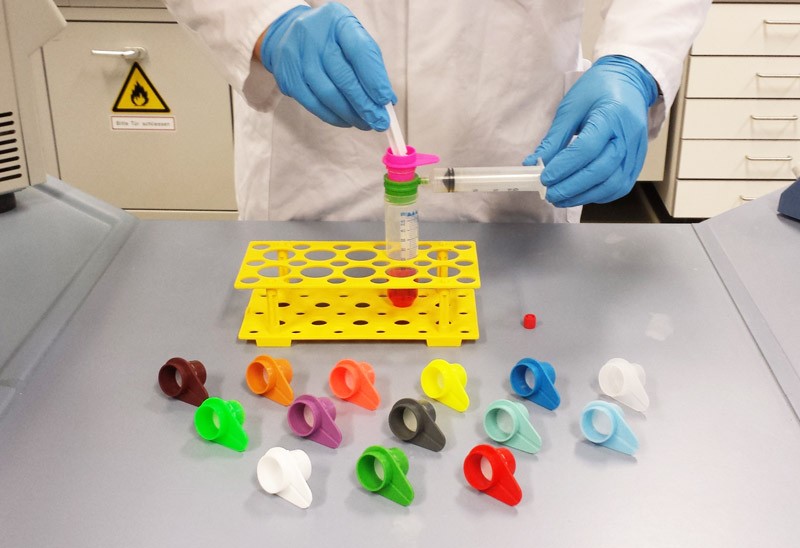Cookie Settings
We use cookies to provide an optimal experience for you. Technically required cookies are used for making shopping possible, statistics are used for anonymized Google Analytics. You can read everything in our updated privacy policy.

Cell strainers are commonly used for removing cell aggregates from cell suspensions. There are a few suppliers with mostly 3 different mesh sizes: 40 µm, 70 µm and 100 µm. Scientists use cell strainers in their lab as a pre-filtering step for further sample processing, but they can do so much more.
Current designs have a few problems. Sample liquid can run out on the side of the cell strainer which causes a liquid barrier to the wall of the 50ml reaction tube, that stops any further sample run through – known as clogging. The wonky body of the filters also makes handling an issue.
Since the introduction of the pluriBead sieving cell separation technology in 2011 – pluriSelect’s own cell strainer brand pluriStrainer were introduced. The smart and unique design erased the issues mentioned above and added new unique and helpful features like stacking or working with low pressure to support the filtration process. Within the last years pluriStrainer® found their application possibilities beside the cell separation procedure as a stand-alone sample preparation and pre-filtering method. More mesh sizes were established and since the end of 2014 there are 19 sizes from 1 to 500µm on the market.
With pluriStrainer® scientists found many new application areas. Find below a few examples:
With the smallest mesh sizes for pluriStrainer it is possible to create real single-cell suspensions to minimize background for e.g. FACS analysis or to remove aggregates from cell cultures (smaller exposure time of digestive enzymes).
Besides removing aggregates from sample material you can also produce and cultivate cell spheroid cultures with optimized spheroid sizes. Different cell strainer mesh sizes can be stacked to sieve different aggregate sizes. Furthermore turning the sieves upside down allows for flushing the sieved material back into a fresh tube for further cultivation or analysis.
A new field is also the sieving and enrichment of pollen and parasites from higher volumes.These sizes are recommended for the physical disruption of tissue to gain primary cells e.g. brain or spleen. The tissue can be disrupted directly on the cell strainer (use for example a syringe piston). If you want to work in a solution you can use a Connector Ring in closed state. This allows keeping cell culture media, wash buffer or enzyme solution directly on the pluriStrainer and prevents your precious material from drying out. Open the Connector Ring after disruption and your sample will run through. Additionally you can attach a syringe to the Connector Ring to gently work with low pressure on the pluriStrainer® to support sieving.
Recommended for the physical shredding of rough tissue like muscle, fat, skin, lung or similar. Subsequent enzymatic digestion is more effective because tissue piece size is maximal 500 µm large.
Accomplishment: Cut tissue - if necessary – with scissors or scalpel into 0.5 to 1 cm pieces. These can be pressed in a rotating way through the sieve with the help of a sterile syringe piston. To maximize the output you can also use a Connector Ring with attached syringe to work with low pressure as mentioned before.
Only 3 available common mesh sizes in cell strainers do not necessarily mean that there is no demand in more. Since pluriStrainer is available in 19 mesh sizes on the market, customers found new ways to act and work with their sample material.